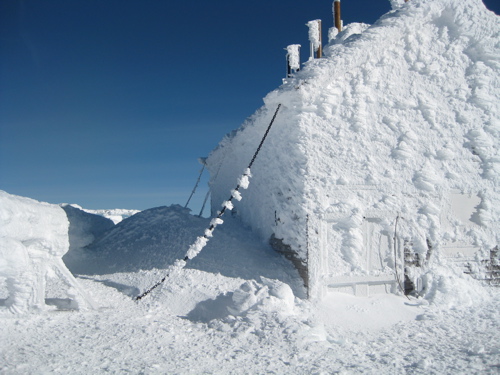Here’s a recording of a new piece called Everyone Looks to the Sky.
[audio:everyone_looks_to_the_sky.mp3]I made the piece and the recording during my recent residency with David Behrman at the Atlantic Center for the Arts. The work is for any sustaining instrument with computer (here, I’m playing the soprano saxophone). The computer produces a gradually rising tone that matches the first note of each gesture (see the score below). The result is–yes, more glissando music–and a curious kind of interactive piece that always ends the same way.
Here are the juicy bits from the score:
Gesture 1
• Play 5 notes in an ascending series, beginning near the lowest note on your instrument.
For a performance lasting 10 mintues, each note should last 7 or many more seconds. Each note should be separated by a rest of approximately 7 or many more seconds–at a minimum, allow enough time between notes to perceive the computer’s pitch rising. For longer performances, adjust the durations appropriately.Gesture 2
• Play 4 notes in an ascending series, beginning on any pitch lower than the last pitch of Gesture 1.
Durations of notes and rests are as in Gesture 1.Gesture 3
• Play 3 notes in an ascending series, beginning on any pitch lower than the last pitch of Gesture 2.
Durations of notes and rests are as in Gesture 1.Gesture 4
• Play 2 notes in an ascending series, beginning on any pitch lower than the last pitch of Gesture 3.
Durations of notes and rests are as in Gesture 1.Gesture 5
• Play 5 or more notes in an ascending series, beginning on any pitch lower than the last pitch of Gesture 4.
Durations of notes and rests are as in Gesture 1, with a few notes or rests lasting shorter than 7 seconds, if desired.
Repeat as needed until the piece ends. The last 4 or more pitches played should be near the highest note on your instrument.






